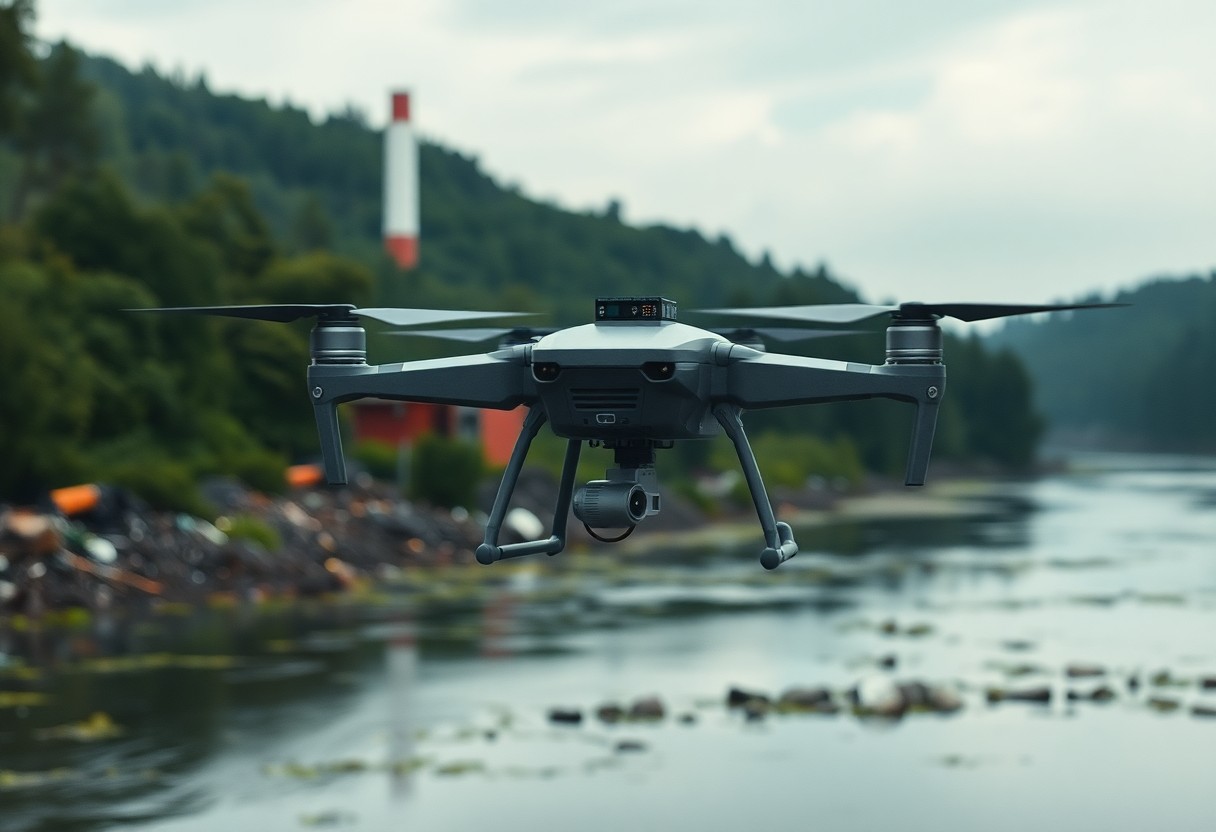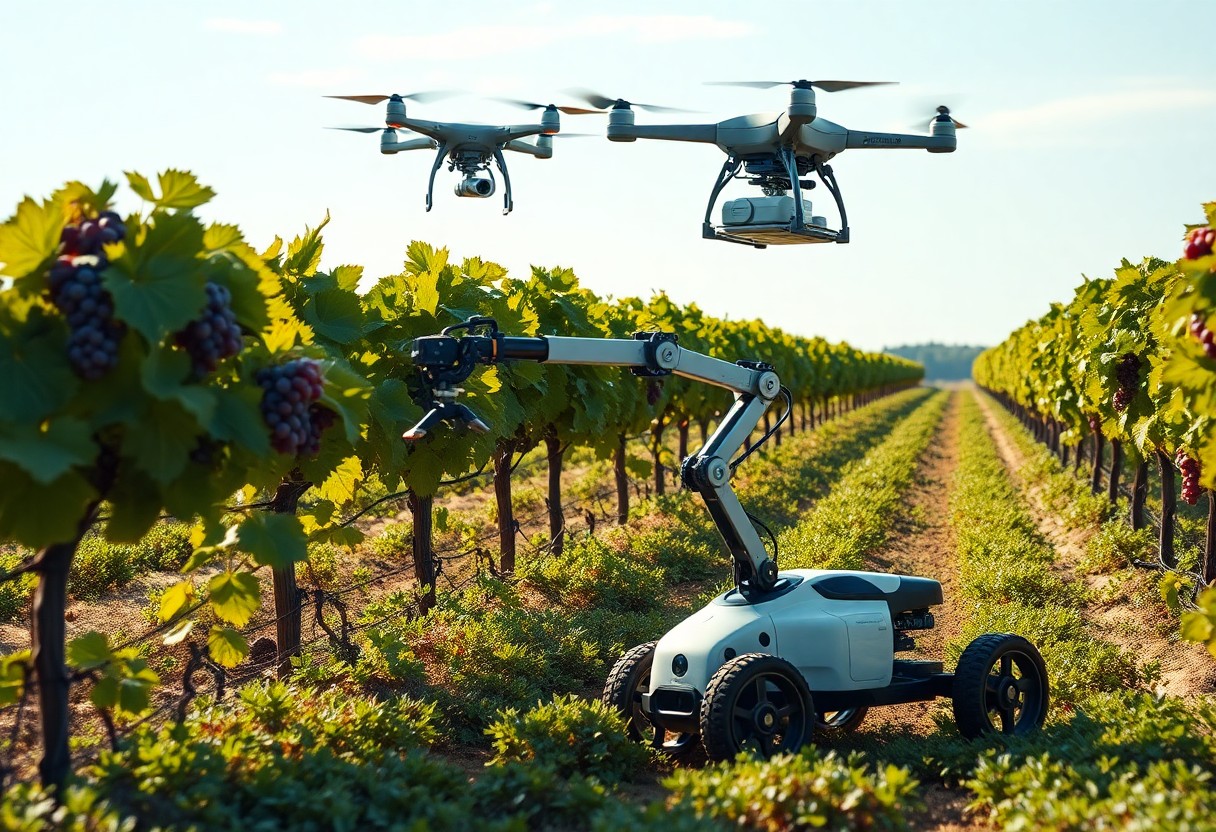Environment monitoring and climate observation are increasingly reliant on advanced robotics technology, enabling you to gather vital data with precision and efficiency. By utilizing drones, autonomous vehicles, and robotic sensors, you can enhance your understanding of environmental changes and their impacts. These innovative tools provide real-time monitoring of ecosystems, facilitate data collection in remote areas, and assist in climate research, empowering you to contribute to sustainable practices and informed decision-making.
The Role of Robotics in Environmental Monitoring
Robots play a transformative role in environmental monitoring, leveraging advanced technologies to gather and analyze data on ecosystems, climate conditions, and natural resources. They enhance the precision and efficiency of data collection in often inaccessible or hazardous environments, allowing for comprehensive assessments of climate change impacts. Your ability to monitor changes in real-time empowers better decision-making for conservation efforts and sustainable practices.
Types of Robots Used
Diverse robotic platforms are geared towards environmental monitoring, each catering to specific requirements. Common types include:
- Aerial drones for remote sensing and surveying
- Autonomous underwater vehicles for aquatic assessments
- Land-based robots for soil and vegetation analysis
- Mobile sensors for air quality monitoring
- Satellite systems for large-scale climate observation
Thou can choose from a variety of robots depending on your monitoring needs and environmental conditions.
| Type of Robot | Key Features |
|---|---|
| Aerial Drones | High-resolution imaging, GPS navigation |
| Autonomous Underwater Vehicles | Depth capabilities, sonar mapping |
| Land-Based Robots | Mobility on uneven terrain, soil sampling |
| Mobile Sensors | Real-time data collection, environmental monitoring |
| Satellites | Global coverage, long-term observation |
Applications in Ecosystem Assessment
Applications of robotics in ecosystem assessment are vast and impactful, providing detailed insights into biodiversity and habitat conditions. These robotic technologies enable you to gather data on species populations, vegetation health, and nutrient levels, significantly enhancing ecological research.
Through initiatives like using drones to survey large forested areas or underwater robots to monitor coral reef health, your understanding of ecosystem dynamics deepens. For instance, aerial drones employing multispectral imaging can detect plant stress, facilitating timely interventions. In marine environments, autonomous underwater vehicles gather critical data on water quality and species distribution, informing conservation strategies. These robotic applications help paint a clearer picture of ecosystem health and resilience, thereby supporting sustainable management efforts.
Climate Observation Technologies
Emerging climate observation technologies play a vital role in tracking environmental changes. Innovations like satellite Earth observation and advanced analytics enable real-time climate data assessment. Robotics enhances this field significantly, offering unparalleled precision in data collection. For insights into how these systems operate within various environments, check out this resource on Environmental Robotics Examples and How They Can ….
Remote Sensing with Drones
Drones equipped with advanced sensors revolutionize remote sensing by capturing high-resolution imagery and data across vast terrains. Their ability to fly at various altitudes allows you to monitor hard-to-reach areas, providing insights into land use changes, vegetation health, and even pollution sources. With real-time data acquisition, drones facilitate timely responses to environmental issues.
Ground-Based Robotic Systems
Ground-based robotic systems are increasingly embraced for their capability to monitor ecosystems and gather environmental data autonomously. These robots can traverse different terrains, capturing detailed information about soil composition, moisture levels, and local biodiversity. Their adaptability makes them vital tools in addressing various ecological challenges.
The intricate functionalities of ground-based robotic systems extend beyond simple data collection. Most systems utilize a combination of sensors and GPS technology, allowing you to accurately map and analyze environmental variables over time. For instance, robots equipped with LiDAR can create precise topographic maps, while others may sample soil and air quality, enabling comprehensive assessments of specific areas. The integration of machine learning processes enhances their predictive capabilities, helping you anticipate environmental changes and devise strategic responses.
Data Collection and Analysis
Effective data collection and analysis form the backbone of environmental monitoring. Robotics equipped with various sensors can gather vast amounts of data from remote or inaccessible areas, enabling real-time insights into environmental conditions. This data encompasses everything from air and water quality to biodiversity metrics. Advanced analytics tools then process this data, transforming raw information into actionable insights that can inform climate action and policy decisions.
Sensors and Instrumentation
Robots utilize a diverse array of sensors and instrumentation to capture environmental data accurately. These include remote sensing satellites, aerial drones, and underwater vehicles, each tailored to specific monitoring tasks. For example, LiDAR sensors provide precise topographical data, while thermal cameras detect temperature variations imperative for tracking climate change. This multidisciplinary approach enhances your ability to monitor ecosystems effectively.
Data Management and Interpretation
Your ability to manage and interpret collected data determines the success of environmental monitoring efforts. Sophisticated software platforms aggregate data from various sources, allowing for comprehensive analysis and visualization. By employing machine learning algorithms, you can identify patterns and trends that inform climate predictions and conservation strategies, ultimately leading to more informed decision-making.
Data management and interpretation not only involve collecting and processing information but also require integrating various datasets for a holistic view of environmental conditions. You may rely on geographic information systems (GIS) to layer different data sources, enabling richer analyses. Additionally, visual tools like dashboards and interactive maps make findings accessible and comprehensible. This holistic approach empowers stakeholders to act on scientific evidence, facilitating targeted interventions in climate response and environmental preservation.
Case Studies in Robotics for Environmental Science
Your understanding of robotics in environmental science benefits from examining successful applications. Various case studies highlight innovative uses of robotic technology to monitor ecosystems, track wildlife, and gather climate data efficiently.
- Robotic Autonomous Underwater Vehicles (AUVs) mapping marine ecosystems, collecting over 10,000 square kilometers of data.
- Drones utilized for monitoring deforestation, identifying 25% more illegal logging sites in comparison to ground surveys.
- Mobile sensors in urban areas collecting air quality data, revealing pollution levels exceeding regulatory standards by 30% in certain locations.
- Rover robots deployed in arctic regions, successfully measuring ice thickness and reporting a 5% reduction per decade.
- Satellite-linked robotic systems tracking elephant migrations, decreasing human-wildlife conflicts by 40% through predictive analytics.
Successful Implementations
Implementations like drone-assisted forest surveys have proven effective, increasing data collection efficiency by 50% and enhancing habitat preservation efforts. These advancements underscore the potential of robotics to optimize monitoring processes across diverse environments.
Lessons Learned
Examining real-world applications reveals key lessons in the deployment of robotic systems for environmental monitoring. Challenges, such as data integration and the need for ongoing maintenance, show that successful projects require careful planning and adaptability.
Complexity often arises when integrating collected data into existing systems, demanding a balance between advanced robotics and user-friendly data interpretation tools. The need for collaboration among scientists, engineers, and local stakeholders ensures that projects align with ecological goals while maximizing technological benefits. Continuous testing and iterative improvements allow for adjustments, enhancing the reliability and effectiveness of robotic systems in diverse environmental monitoring applications.

Challenges and Limitations
Despite their potential, robotics for environmental monitoring face several challenges that hinder widespread implementation. These include high costs, technical limitations, regulatory hurdles, and the need for operator training. The integration of robotics into existing systems often requires significant investment and adaptation, making it difficult for smaller organizations or developing regions to engage fully.
Technical Barriers
Technical barriers present significant obstacles in deploying robotic systems for environmental monitoring. Issues such as battery life, sensor reliability, and data transmission capabilities can limit the effectiveness of these technologies. For instance, underwater drones may struggle with maintaining power for extended missions, impacting the quality and quantity of collected data. Advancements in materials and energy sources are necessary to overcome these limitations.
Ethical Considerations
Ethical considerations arise when using robotics in environmental monitoring, particularly concerning data privacy, ecological impact, and human displacement. You must be aware that deploying robots in sensitive areas can disrupt wildlife, and the data collected might raise privacy issues for communities nearby.
Autonomous systems must be designed with sensitivity to local ecosystems, ensuring that they do not interfere with wildlife migration or nesting patterns. You should also consider community input when deploying these technologies, as their presence might raise concerns about monitoring and surveillance. Balancing technological advancement with ethical responsibilities will foster trust and encourage collaborative efforts between researchers, environmentalists, and the communities affected. Prioritizing ethical frameworks will ensure that robotics not only serves monitoring goals but also respects the integrity of the natural world and local populations.
Future Trends in Robotics and Environmental Monitoring
As robotics continues to advance, you can expect significant innovations that will enhance environmental monitoring and climate observation. Next-generation drones will likely feature improved AI algorithms for real-time data analysis and decision-making, allowing for more efficient assessments of ecological changes. Additionally, the integration of bio-inspired designs may lead to autonomous systems that better mimic natural processes, resulting in more effective data collection methods tailored to specific environments.
Innovations on the Horizon
Expect innovations like enhanced swarm robotics that enable teams of small, interconnected drones to collaborate on large-scale environmental tasks. These systems can cover expansive areas and share data seamlessly, leading to a more comprehensive understanding of environmental conditions. Moreover, advances in battery life and renewable energy sources can empower these robots to operate for extended periods without human intervention.
Integration with Other Technologies
You will see a greater integration of robotics with Internet of Things (IoT) devices, enhancing data collection and monitoring capabilities. This synergy allows you to leverage real-time data streams from various sensors, leading to a holistic view of environmental conditions and quicker responses to changes.
Integrating robotics with IoT technologies can revolutionize environmental monitoring. Combining autonomous drones with IoT sensors facilitates immediate data relay and analysis, offering you an enhanced ability to respond to environmental shifts. For instance, using connected devices alongside robotic platforms allows for continual monitoring of air quality, water levels, and soil conditions in real-time. This interaction fosters collaborative efforts between different technologies, leading to groundbreaking applications in disaster response and ecosystem management, ensuring that your initiatives are both timely and efficient.
To wrap up
On the whole, utilizing robotics for environmental monitoring and climate observation empowers you to gather precise data and respond proactively to ecological challenges. These advanced technologies enhance your ability to analyze and understand climate patterns, improving decision-making for sustainability. By integrating robotics into your environmental strategies, you contribute to more effective conservation efforts and a better-informed society. Embracing these innovations positions you at the forefront of the fight against climate change, ultimately helping to protect the planet for future generations.







